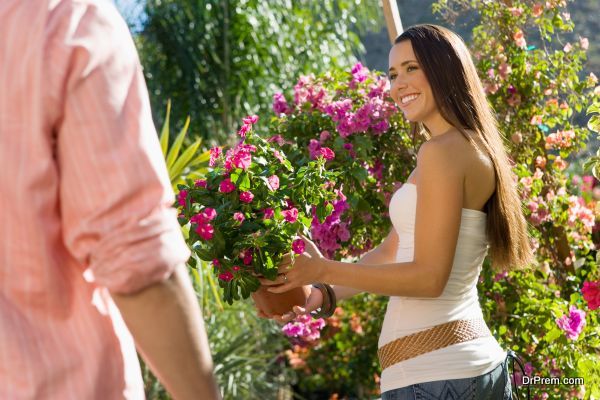Has your garden been good to you this year? And are you thinking about expanding it in the future? As most gardeners know, winter is the perfect time for planning and thinking of all the ways that your garden can be even better in the coming year.
One of the primary concerns of an eco-conscious gardener is how to increase your harvest while staying away from harsh chemicals. Here are some carefully curated ideas for you to consider…
- Grow vertically
Often it is a matter of space limitations that cause you to have a low yielding harvest. But you can use every bit of space to a greater degree just by focusing upwards. For example, install a trellis or a support fence for tomatoes, cucumbers, peas, or beans. Aside from just conserving space and maximizing yield, vertical gardening makes harvesting a breeze.
- Go green with a greenhouse
One of the best ways to get a higher yield for your garden is to grow your garden in a greenhouse. Greenhouses extend the gardening season, allowing you to start earlier in the year and end later. Some greenhouses, such as light dep greenhouse varieties, come with automated light controls. This means you can provide the environmental control of an indoor facility, with the nutrients the sun provides.
- Plant high-yield crops
Limited in space? Then you want to be planting vegetables that will grow compact while providing you with the biggest bang for the effort expended. To be clear, we are not talking about genetically modified vegetables. In this case, we simply mean how much fruit or vegetable you will get for each square of garden you cultivate. Examples of high yielding plants include tomatoes. Squash is another very high yield plant that will have you become either the bane or the joy of your neighbors’ existence. (Depending on whether they like squash or not.) Other high yield plants include cucumbers, leaf lettuce, beets, and radishes.
- Get a fast start with seedlings
Do you know what you will be planting after your summer tomatoes? You could get a head start by getting the seedlings of your next rotation ready beforehand. Start your seedlings off in trays indoors to keep them protected before you are able to transplant them in the ground. Doing this will allow you to harvest your current crop and replant your next, all in one day.
- Cover it up with mulch
You probably already do this, but as all good gardeners know, mulching is a vital way to prevent loss of water to your soil. Not only that, but it also reduces weeds and keeps the soil cool in the summer and warm in the winter. If your mulch is organic, it can also improve the nutrient quality of your soil. What is it made of? Mulch is anything that covers the soil or that you use to protect the surface of your garden. Natural or organic mulches include fallen leaves, twigs, fallen fruit, etc.
- Compost for healthy soil
One of the mainstays of having an eco-friendly garden is avoiding chemical fertilizers. Instead, an eco-friendly gardener will try to improve the soil by using organic compost. Organic compost can help increase the size of your yield by improving the quality of your soil. Healthy soil means healthier plants. Natural compost includes fruit peels, vegetable trimmings, eggshells, coffee grounds, tea bags, etc. Avoid adding meat or any type of foods with a high fat content, such as cheese, oil, salad dressing, etc. Compost can take anywhere from a couple of months to a year before it is ready to be added to your garden. So now is the time to work on your compost for next year’s planting season.
With just a few modifications to your garden, you can already start looking forward to a greater yield during next year’s harvest!
Article Submitted By Community Writer






